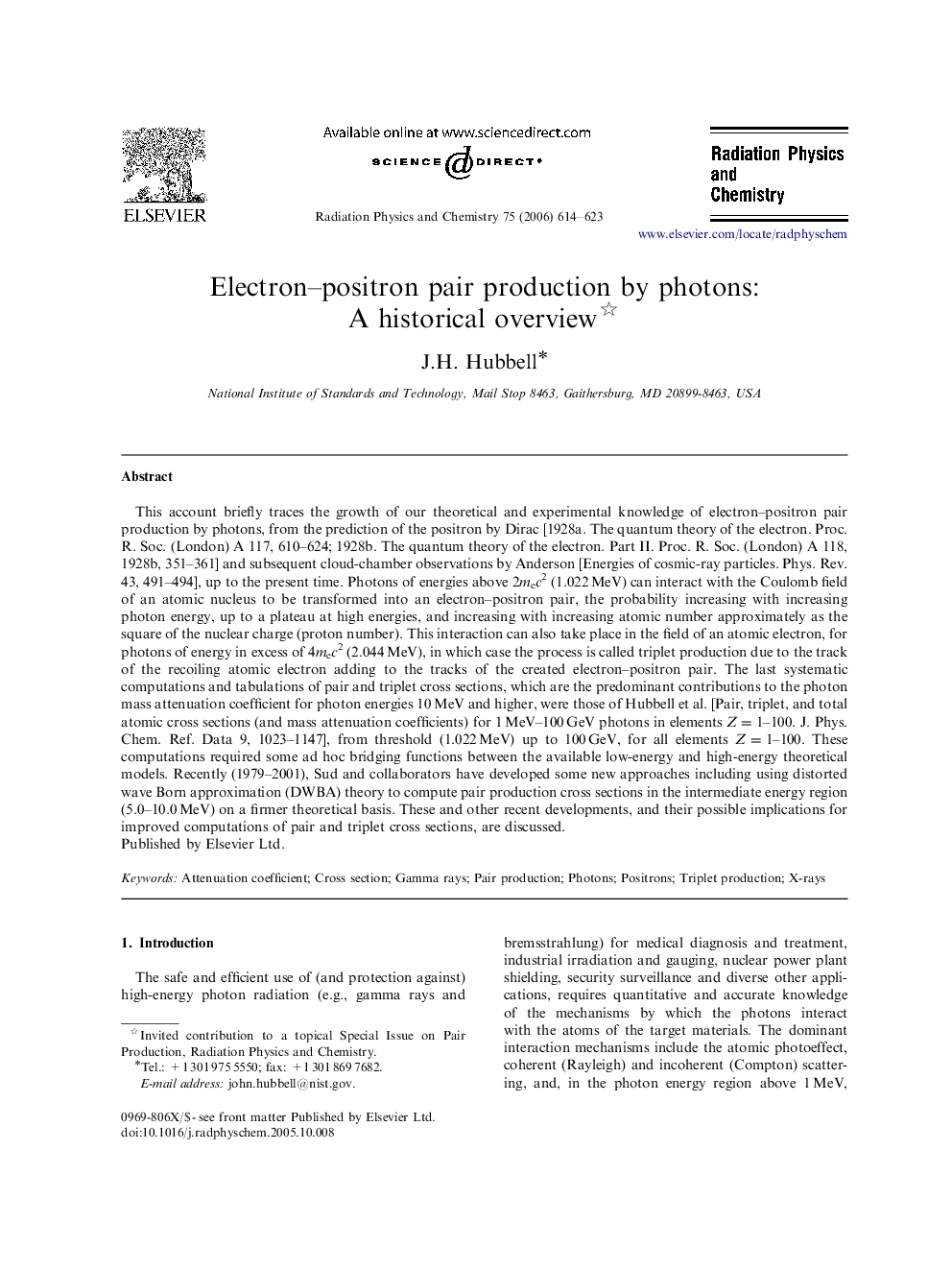| کد مقاله | کد نشریه | سال انتشار | مقاله انگلیسی | نسخه تمام متن |
|---|---|---|---|---|
| 1887684 | 1043602 | 2006 | 10 صفحه PDF | دانلود رایگان |

This account briefly traces the growth of our theoretical and experimental knowledge of electron–positron pair production by photons, from the prediction of the positron by Dirac [1928a. The quantum theory of the electron. Proc. R. Soc. (London) A 117, 610–624; 1928b. The quantum theory of the electron. Part II. Proc. R. Soc. (London) A 118, 1928b, 351–361] and subsequent cloud-chamber observations by Anderson [Energies of cosmic-ray particles. Phys. Rev. 43, 491–494], up to the present time. Photons of energies above 2mec2 (1.022 MeV) can interact with the Coulomb field of an atomic nucleus to be transformed into an electron–positron pair, the probability increasing with increasing photon energy, up to a plateau at high energies, and increasing with increasing atomic number approximately as the square of the nuclear charge (proton number). This interaction can also take place in the field of an atomic electron, for photons of energy in excess of 4mec2 (2.044 MeV), in which case the process is called triplet production due to the track of the recoiling atomic electron adding to the tracks of the created electron–positron pair. The last systematic computations and tabulations of pair and triplet cross sections, which are the predominant contributions to the photon mass attenuation coefficient for photon energies 10 MeV and higher, were those of Hubbell et al. [Pair, triplet, and total atomic cross sections (and mass attenuation coefficients) for 1 MeV–100 GeV photons in elements Z=1–100. J. Phys. Chem. Ref. Data 9, 1023–1147], from threshold (1.022 MeV) up to 100 GeV, for all elements Z=1Z=1–100. These computations required some ad hoc bridging functions between the available low-energy and high-energy theoretical models. Recently (1979–2001), Sud and collaborators have developed some new approaches including using distorted wave Born approximation (DWBA) theory to compute pair production cross sections in the intermediate energy region (5.0–10.0 MeV) on a firmer theoretical basis. These and other recent developments, and their possible implications for improved computations of pair and triplet cross sections, are discussed.
Journal: Radiation Physics and Chemistry - Volume 75, Issue 6, June 2006, Pages 614–623